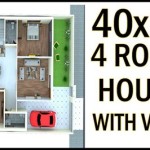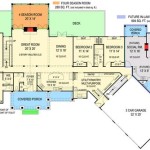Essential Aspects of Do-It-Yourself Small Home Plans
Embarking on a DIY small home construction project can be an exciting yet challenging endeavor. With careful planning and attention to essential aspects, you can create a cozy and functional living space that meets your needs and budget. Here's a guide to help you navigate the key considerations of DIY small home plans.
1. Site Selection
Choosing the right location for your small home is crucial. Factor in factors such as access to utilities, slope, soil conditions, and proximity to amenities. Consider the size and shape of the available land to determine if it accommodates your home design.
2. Design Considerations
Determine the size, layout, and features you desire for your home. Sketch a preliminary floor plan, considering natural light, ventilation, and efficient use of space. Research different building materials and their suitability for small-scale construction.
3. Building Materials
The choice of building materials significantly impacts the cost, durability, and aesthetics of your home. Explore options such as timber frame, concrete, straw bales, or reclaimed materials. Consider sustainability and environmental friendliness along with cost-effectiveness.
4. Utility Systems
Plan for essential utility systems such as plumbing, electricity, and heating/cooling. Determine the placement of fixtures, outlets, and appliances. Consider renewable energy sources like solar panels or a geothermal heat pump to reduce operating costs.
5. Structural Integrity
Ensure that your home meets building codes and safety standards. Properly design the foundation, frame, and roof to withstand the weight of the building and any potential environmental loads. Seek professional advice from an engineer or architect if necessary.
6. Insulation and Energy Efficiency
Incorporate adequate insulation in the walls, roof, and floor to minimize heat loss and energy consumption. Utilize energy-efficient appliances, lighting, and windows to further reduce utility costs and contribute to a comfortable living environment.
7. Legal and Regulatory Requirements
Comply with local building codes and zoning regulations. Obtain necessary permits and inspections throughout the construction process. Ensure that your home meets all safety and accessibility standards to avoid potential legal concerns or construction delays.
8. Project Management
Develop a detailed project plan and timeline to avoid delays and keep costs under control. Break down the construction process into manageable tasks and allocate resources effectively. Consider hiring subcontractors for specialized tasks if needed.
9. Tools and Equipment
Acquire the necessary tools and equipment for completing the project. Rent or purchase essential items like saws, drills, and safety gear. Familiarize yourself with the operation and maintenance of all equipment to ensure safety and efficiency on the job site.
10. Seek Professional Advice
While DIY construction can be rewarding, don't hesitate to seek professional advice when needed. Consult with architects, engineers, or experienced builders for guidance on complex aspects of design, structural integrity, or building systems.

17 Do It Yourself Tiny Houses With Free Or Low Cost Plans Cottage House Style

17 Do It Yourself Tiny Houses With Free Or Low Cost Plans Small Cabin Building House

17 Do It Yourself Tiny Houses With Free Or Low Cost Plans House Mobile Trailer

17 Do It Yourself Tiny Houses With Free Or Low Cost Plans Small House Floor Cabin
:max_bytes(150000):strip_icc()/ana-tiny-house-58f8eb933df78ca1597b7980.jpg?strip=all)
4 Free Diy Plans For Building A Tiny House
Est House Plans To Build Simple With Style Blog Eplans Com

27 Adorable Free Tiny House Floor Plans Craft Mart

17 Do It Yourself Tiny Houses With Free Or Low Cost Plans House Design Floor
:max_bytes(150000):strip_icc()/tiny-house-58f8ea1e3df78ca1597b528a.jpg?strip=all)
4 Free Diy Plans For Building A Tiny House

17 Do It Yourself Tiny Houses With Free Or Low Cost Plans House Floor Round








